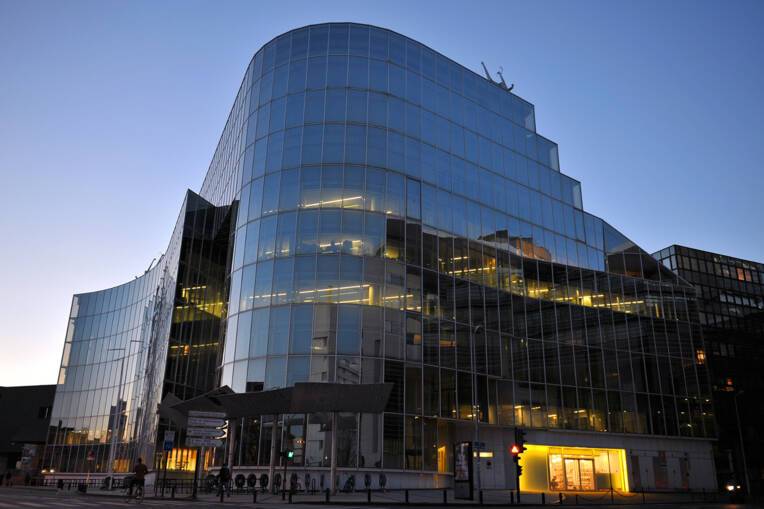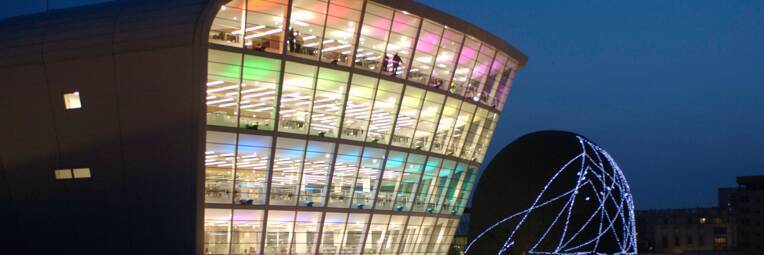Digital Reference Libraries
The Reference Digital Libraries Programme was launched in March 2010 as part of the 14 proposals for the development of reading.
The objective of the programme is tohelp large French communities develop digital programs high-level, capable of providing users with leading digital collections and services and thereby:
- reach new audiences (young people, the elderly, people with disabilities, distant audiences),
- to contribute to the modernization of libraries so that they remain at the heart of the cultural and social activity of their territory.
The proposal was based on the following reasoning: the existing funding arrangements in this area only support partial and limited digital initiatives for libraries. The creation of a digital library and digital services requires a political commitment as demanding as the construction of permanent equipment and a long-term technical and financial investment. Specific support, at a high and multiannual level, must be set up for this type of project. The State focuses its support on two tools: a multiannual financial support via the special assistance for libraries within the general decentralization allocation (DGD) and, for classified libraries, the provision, renovated and directed towards digital, of state curators.
The program relies primarily on:
- on the awarding by the ministry of a label recognizing the quality of the project submitted1,
- on an accompanying device based on significant State funding by multi-year mobilization of the DGD, and on networking and technical support of the project by the State services.
The projects of the Reference Digital Libraries include the orientations of the programme concerning:
- the impact on audiences (digital accessibility, mediation and digital training, portals and websites, innovative devices, digital inclusion...);
- the development of digital collections and services (creation of digital services, digitization and heritage library, digital resources...);
- the evolution of professional practices (staff training, evolution of computer and digital tools, evaluation process...);
- the territorial influence (partnerships, participation in a local digital ecosystem, registration in regional/national projects, mobile digital devices2...).
For more information on the program, see BNR Practical Guide
The Reference Digital Libraries program has been a real success with local authorities and more than 63 communities have integrated it to date:
- Le Havre, the European Metropolis of Lille, the departmental councils of the Somme, Haute-Loire, Savoie and Haute-Savoie (grouped within Savoie-Biblio) in 2022.
- Périgueux, the departmental councils of Aisne, Dordogne, Saône-et-Loire, North and Lot in 2021.
- The departmental councils of Finistère, Landes, Bas-Rhin, Loiret, Calvados, Lozère, Haute-Garonne, Pas-de-Calais, Perpignan, Rouen and the Sillon Lorrain in 2020.
- The Departmental Councils of Val d'Oise, Indre-et-Loir, Loir-et-Cher, Nièvre, Hautes-Alpes, Communauté d'agglomération Pau Béarn Pyrénées, Reims and Plaine Commune in 2019.
- The departmental councils of Isère and Hérault, Le Havre, Toulouse, Versailles and Grand Paris Sud in 2018.
- The Departmental Councils of Jura and Puy-de-Dôme, Poitiers, Saint-Étienne, the Agglomeration Community of Cambrai and the Urban Community of Dunkirk, Bayonne, the City of Paris in 2017.
- Nantes, the departmental councils of the Loire and the Drôme, Valence Romans Agglo in 2016.
- Aix-en-Provence, Bordeaux, Brest, Caen-la-Mer, the Departmental Council of Pas-de-Calais, Plaine Commune and Grand Troyes in 2015.
- Le Sillon lorrain (Nancy, Épinal, Metz, Thionville) and Rouen in 2013.
- Lyon, Lille, Rennes Métropole, Roubaix, Grenoble and Valenciennes in 2012.
- Compiègne, Nîmes and the agglomeration community of Montpellier in 2011.
- Orléans and Moulins Community in 2010.
1 The award of the label is based on the analysis by the State services of a dossier composed of 1) a digital project (adaptation of the cultural, scientific, educational and social project of the institution), 2) a letter of application of the community addressed to the Ministry, 3) a multi-year and phased budget, 4) Community deliberations (see NRO Practical Guide). Libraries interested in the program are strongly encouraged to contact their advisor. Book and read upstream of the development of the project and the filing of the file to benefit from their expertise.
2 The elements mentioned do not constitute an exhaustive list of the components of a BNR project but examples of possible achievements.





